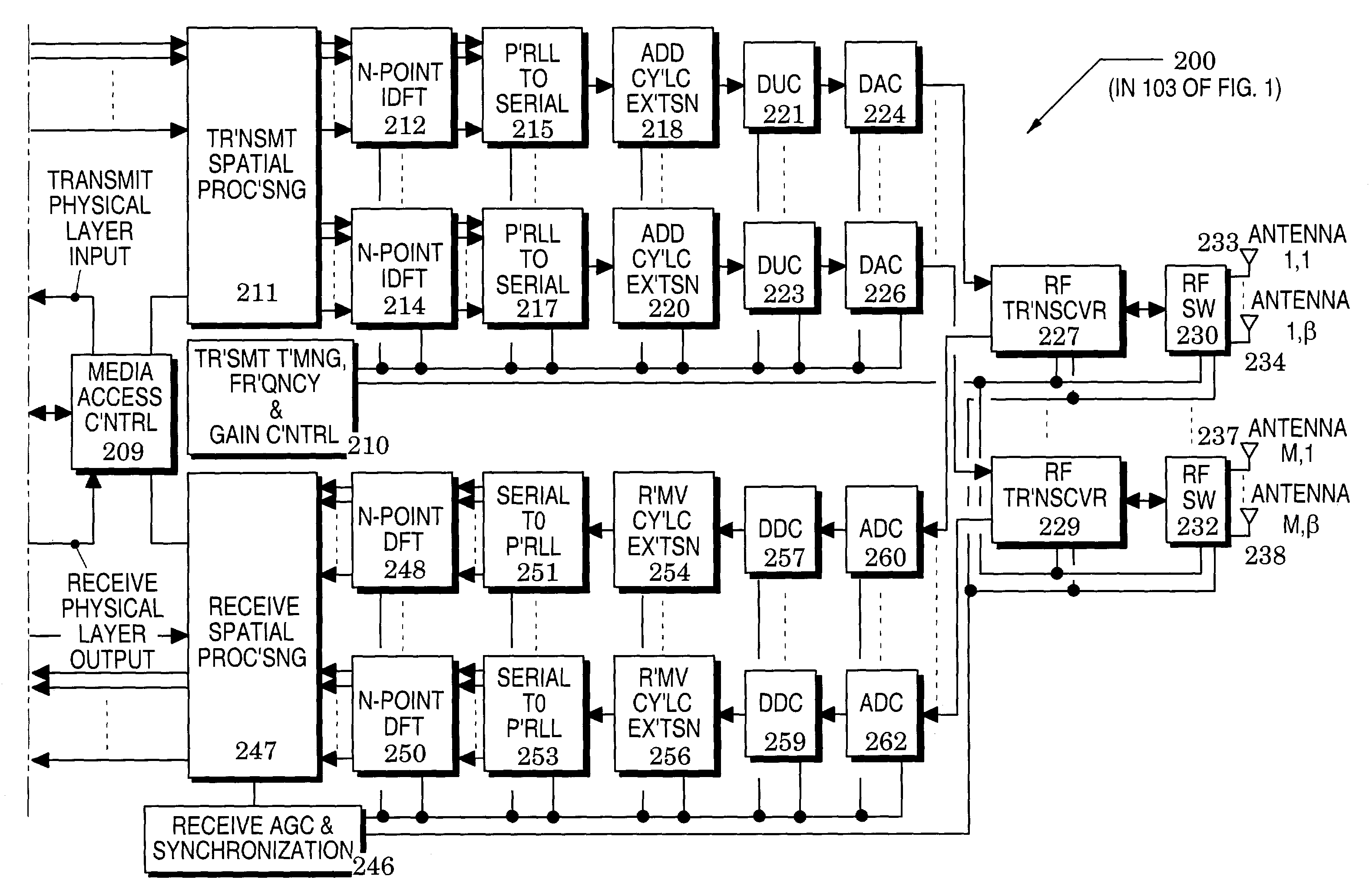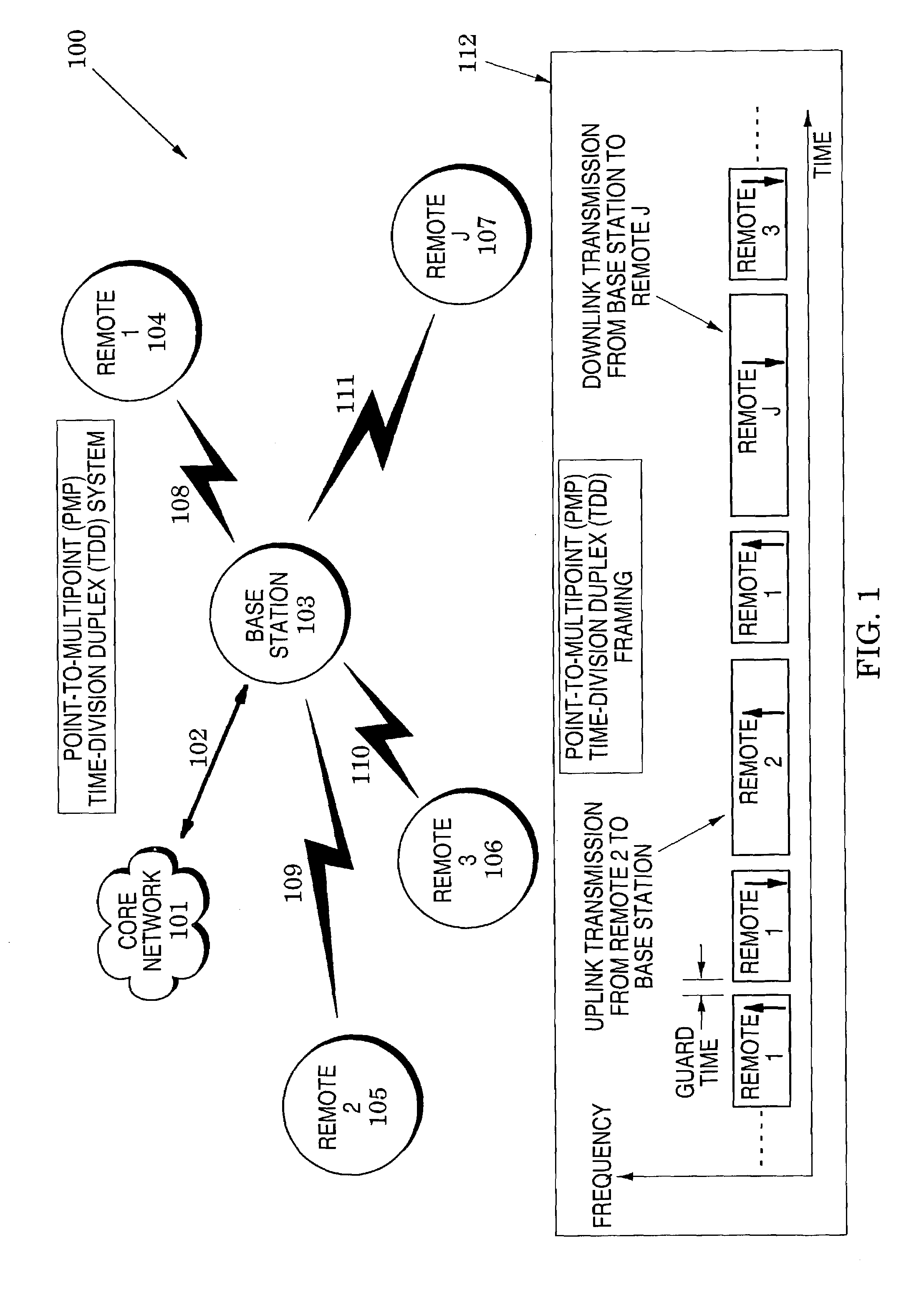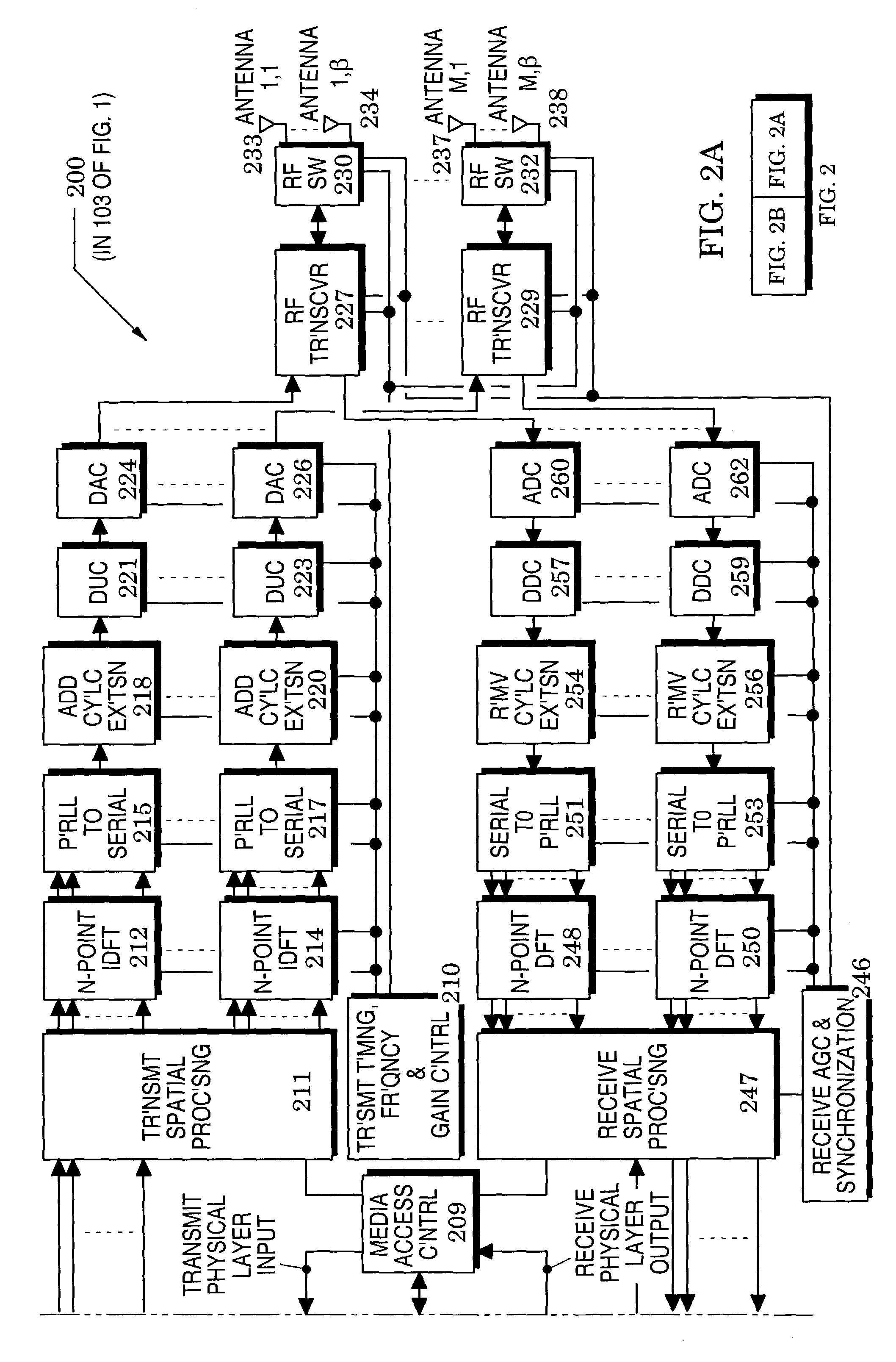Wireless communications structures and methods utilizing frequency domain spatial processing
a frequency domain and spatial processing technology, applied in the field of wireless communications systems, can solve the problems of limiting the range and data rate of any device deployed in a wireless network, limiting the performance of modern wireless communications equipment, and unable to support future multimedia and other high data rate applications such as streaming video, so as to enhance the overall system performance
- Summary
- Abstract
- Description
- Claims
- Application Information
AI Technical Summary
Benefits of technology
Problems solved by technology
Method used
Image
Examples
first embodiment
[0094]In addition to sliding window averaging as described above, the invention includes additional embodiments that utilize different techniques to estimate the covariance and cross-correlation in the ST-SMI and MT-SMI algorithms. The first embodiment employs a nonlinear filter to derive the estimated covariance and cross-correlation. The most common type of nonlinear filter is the median filter, which is a more robust estimator than averaging in the presence of impulsive noise. Taking the median of the parenthesized multiplicative result over a sliding window (as illustrated in FIG. 4) results in the following expressions for the single-tone estimated covariance and cross-correlation
{circumflex over (R)}i(n)=med (ui(j)uH(j))+γρ2I
{circumflex over (p)}i(n)=med (ui(j)di*(j))
[0095]Likewise, the multi-tone equations for estimated covariance and cross-correlation may be modified to employ a sliding window median function as illustrated below
{circumflex over (R)}(n)=med (u(j)uH(j))+γσ2I
{...
second embodiment
[0096]The second embodiment utilizes adaptive filtering techniques to estimate the covariance and cross-correlation. For example, such an embodiment could produce, effectively, a longer filter time constant in low signal-to-noise conditions to improve estimation accuracy.
[0097]Although the invention imposes no restrictions on the technique(s) employed to solve the linear equation for the array weight vector in the ST-SMI and MT-SMI algorithms, a preferred embodiment is the LDLH factorization combined with forward and backward substitution. In many references on matrix computations, this type of factorization is referred to as LDLT for real data. LDLT has been referred to as the Square Root Free Cholesky Factorization. The LDLH factorization decomposes a Hermitian square positive-definite matrix into L, a lower triangular with ones on the diagonal and D, a diagonal matrix, the original matrix being equivalent to LDLH, where the ‘H’ superscript denotes a Hermitian transpose.
[0098]The ...
PUM
 Login to view more
Login to view more Abstract
Description
Claims
Application Information
 Login to view more
Login to view more - R&D Engineer
- R&D Manager
- IP Professional
- Industry Leading Data Capabilities
- Powerful AI technology
- Patent DNA Extraction
Browse by: Latest US Patents, China's latest patents, Technical Efficacy Thesaurus, Application Domain, Technology Topic.
© 2024 PatSnap. All rights reserved.Legal|Privacy policy|Modern Slavery Act Transparency Statement|Sitemap



